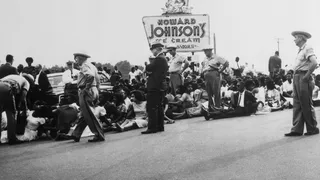Free Speech: When Civil Rights Demonstrators Created Their Most Effective Tool Of Resistance
Despite the risks they faced, these protesters from 1963 used the simple act of sitting down as the biggest form of defiance.

1 / 7
Tougaloo College Professor John R. Salter (later known as John Hunter Gray), was with a group of students including Joan Trunpauer, and Annie Moody at a Woolworth's lunch counter when he was pelted with objects and had condiments poured on them. Salter was beaten by the crowd. The photo became known globally for how it depicted what was happening during the sit-ins.
Photo By Getty Images

2 / 7
Sit-ins were not unique to the American south. In July, 1963, protesters were demonstrating against racism in the building trades. Civil Rights activists were calling for more Blacks and Latinos to be hired for jobs in that field. Here at a construction site for the Downstate Medical Center in Brooklyn, N.Y., a woman is carried away by police officers after staging a sit-in to block access to the site.
Photo By Getty Images
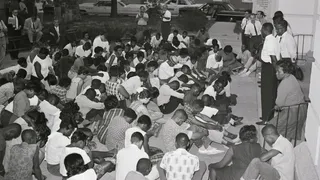
3 / 7
July 1963 saw serious social unrest in Camridge, Md., over multiple issues ranging from equal employment opportunities to segregated seating in movie theaters. On July 11, White patrons of the Dizzyland Restaurant attacked demonstrators as they tried to integrate the facility, The tension got to the point where White and Black citizens began to exchange gunfire. In this photo, protesters stage a sit-in at the Cambridge courthouse.
Photo By Getty Images
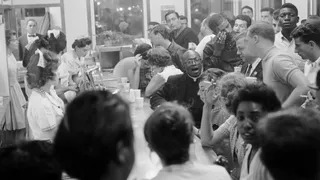
4 / 7
It might be hard to believe today, but even fast food was subject to segregation long ago. According to The New York Times, the Congress of Racial Equality (CORE) was demonstrating at a White Castle restaurant in Bronx, N.Y., demanding a change in their hiring practices. They decided to sit-in while patrons were buying food. But by the late evening, they clashed with both police and patrons and some of them threw hot coffee on the picketers. Three of them were arrested.
Photo By Getty Images
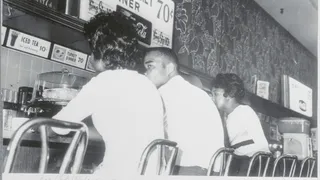
5 / 7
Woolworth’s was frequently a target of student sit-ins because of the Jackson, Miss., mayor Allen Thompson’s determination to uphold a policy of segregation. The department store was at a central location downtown, and familiar enough to the community as a place where Black people were not welcome. Here, Memphis Norman, 21, sits with two other Tougaloo Students just before a White man violently attacks him.
Photo By Getty Images
ADVERTISEMENT
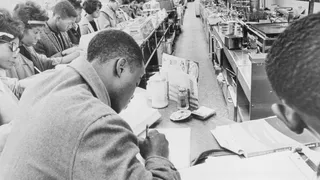
6 / 7
Little Rock, Ark., already infamous for the local government’s attempts to keep Black students from integrating its largest high school in 1957, was still a focal point of Civil Rights demonstrations. In this June 1963 photo, young Black student demonstrators (many from HBCU Philander Smith College) came to sit at a Woolworth’s lunch counter demanding service, but it was never given to them. Local leaders had actually agreed that public places must be desegregated by Jan. 1, but the students, not satisfied that this had taken place decided to take action.
Photo By Getty Images
